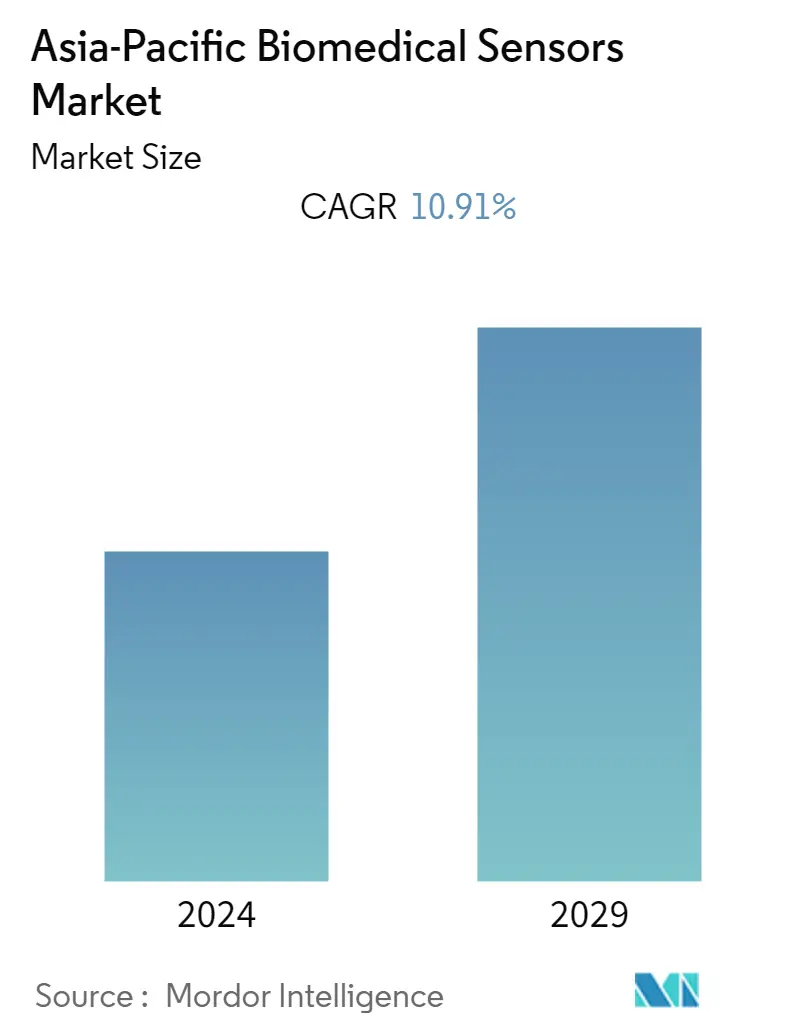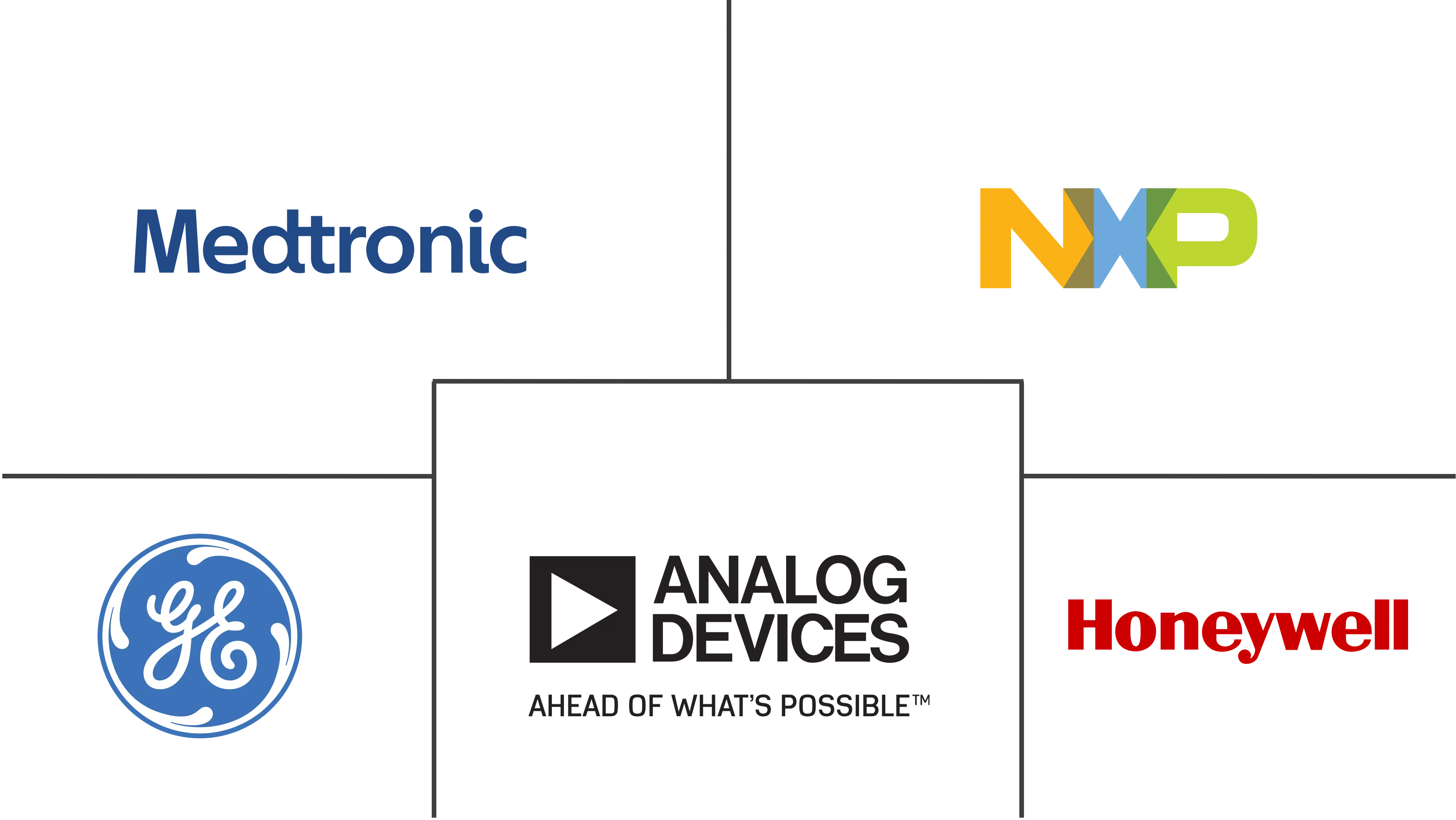Market Size of Asia-Pacific Biomedical Sensors Industry

| Study Period | 2019 - 2029 |
| Base Year For Estimation | 2023 |
| Forecast Data Period | 2024 - 2029 |
| Historical Data Period | 2019 - 2022 |
| CAGR | 10.91 % |
| Market Concentration | Low |
Major Players
*Disclaimer: Major Players sorted in no particular order |
Need a report that reflects how COVID-19 has impacted this market and its growth?
APAC Biomedical Sensors Market Analysis
The Asia-Pacific biomedical sensor is expected to register a CAGR of 10.91% over the forecast period. The increased use of biomedical sensors to monitor glucose levels in diabetics is one of the major reasons likely to drive the growth of the biomedical sensors market during the forecast period. The increased demand for home-based point-of-care (POC) devices is expected to fuel the growth of the biomedical sensors market. Government initiatives in diagnostics and considerable technical advancements are expected to buffer the expansion of the biomedical sensors market.
- According to the International Diabetes Federation, in 2021, China was expected to have 1.08 billion individuals aged 20 to 79, by far the biggest population of any country. The country had over 336 million children and adolescents aged 5 to 19 with type 1 diabetes. According to the Institute for Health Metrics and Evaluation, by 2024, the number of diabetic patients in Indonesia is estimated to reach approximately 9.5 million. Such a huge increase in diabetic individuals is expected to drive the studied market.
- Various organizations and institutions are developing new products to enhance the application of biomedical sensors. For instance, a multidisciplinary team of researchers from Amity University in Asia-Pacific developed a reusable biosensing platform for the accurate, sensitive, and early detection of infectious diseases such as dengue and other mosquito-borne diseases prevalent in tropical climates. The researchers put the dengue virus's single-stranded DNA into a nanoparticle-coated, fluorine-doped electrode. If the blood sample contains dengue, the biosensors will bind to the complementary strand selectively and irreversibly. The electrode is linked to a gadget that can quantify process changes and alert diagnosticians to an infection. The sensor is regenerated and ready for the next test when the electrode is treated with sodium hydroxide.
- Wearable biomedical sensors are becoming more popular for continuous health monitoring. Wireless sensors encased in bandages or patches or a body-worn form factor are used for sensing. The data collected by biomedical sensors is analyzed and used to predict the potential of a patient's deteriorating clinical condition and assess the impact of necessary clinical actions. Sweat, blood, and other biological substances are frequent analytes used in clinical testing.
- The slower penetration rate of advanced medical systems in developing regions remains a key constraint for the market. The penetration of the most advanced products and technologies in developing and underdeveloped areas is always slower. Several regions in developing countries remain vulnerable because of a lack of proper healthcare. Most of these areas are located in Southern Asia. Most healthcare systems, whether private or public, or government, are clustered in urban areas, and health services are scarce in rural belts. As per World Bank, the major part of the treatment should be handled at primary healthcare centers, which are mostly not managed as per the standards.
- During the pandemic, The Indian Space Research Organization (ISRO) developed three types of ventilators and offered to transfer the technology to industry for clinical use as the country faced the second wave of the COVID-19 outbreak. 'PRANA' (Programmable Respiratory Assistance for the Needy Aid) is a low-cost and portable critical care ventilator based on the automated compression of an AMBU (Artificial Manual Breathing unit) bag. The system comprises a complex control system that incorporates an airway pressure sensor, a flow sensor, an oxygen sensor, a servo actuator, and expiration and PEEP (Positive End Expiratory Pressure) control valves.
